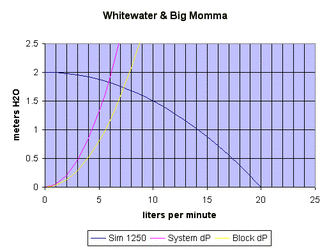Fisrts post so want to say hello to all.
There is much discussion as to the larger diameter hoses being better than smaller dia hoses. My question is if any of the fittings or nipples used in the system or internal routing of the water path is smaller than the larger tubing would that not defeat the purpose of using a larger hose due to the restriction? In other words would it be imperative that the whole system not have a path of smaller dia then the hoses used. It would be similar to increased resistance in an electrical circuit causing a larger voltage drop but in this case a drop in flow GPH.
Also I would imagine its the gph or flow that you want maxed out not the pressure created by smaller or restricted openings.
I apologize if it seems like a dumb question but to my thinking the whole system would have to maintain the large diameter or its purpose is defeated.
Thank you in advance for your help.
There is much discussion as to the larger diameter hoses being better than smaller dia hoses. My question is if any of the fittings or nipples used in the system or internal routing of the water path is smaller than the larger tubing would that not defeat the purpose of using a larger hose due to the restriction? In other words would it be imperative that the whole system not have a path of smaller dia then the hoses used. It would be similar to increased resistance in an electrical circuit causing a larger voltage drop but in this case a drop in flow GPH.
Also I would imagine its the gph or flow that you want maxed out not the pressure created by smaller or restricted openings.
I apologize if it seems like a dumb question but to my thinking the whole system would have to maintain the large diameter or its purpose is defeated.
Thank you in advance for your help.


